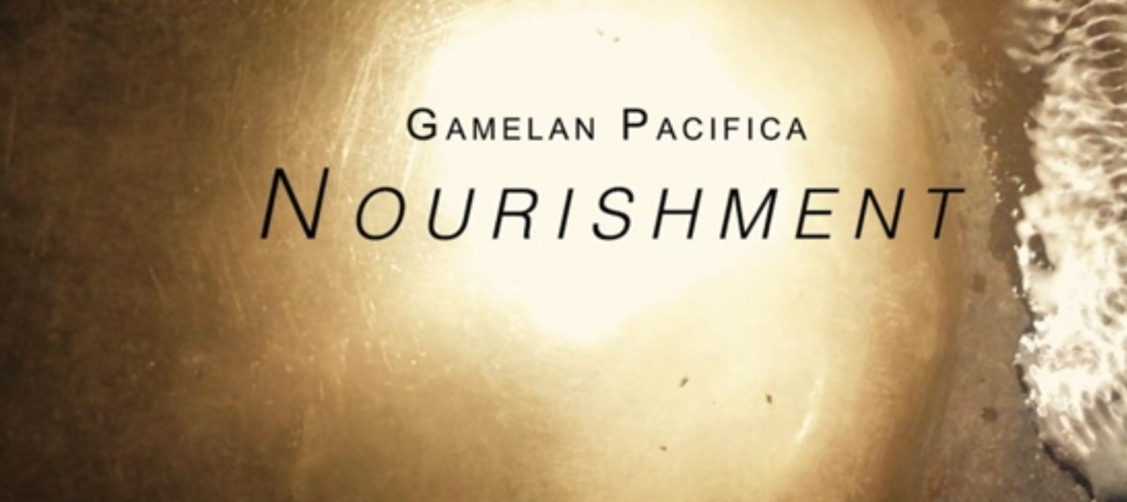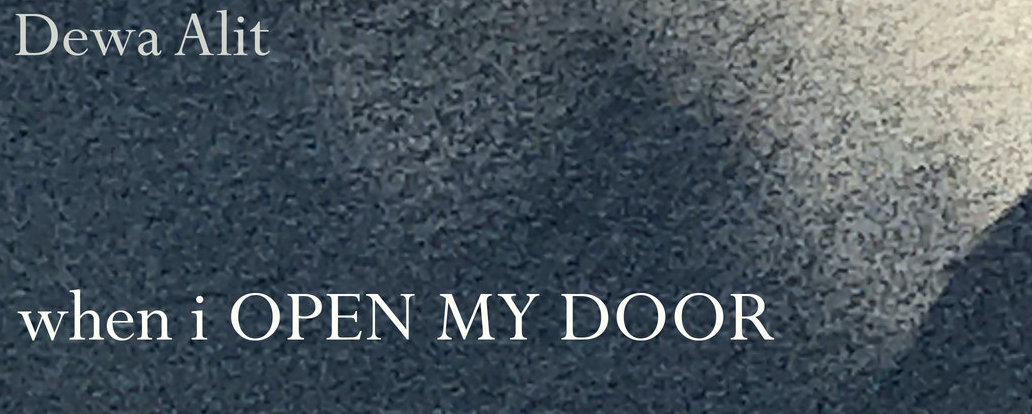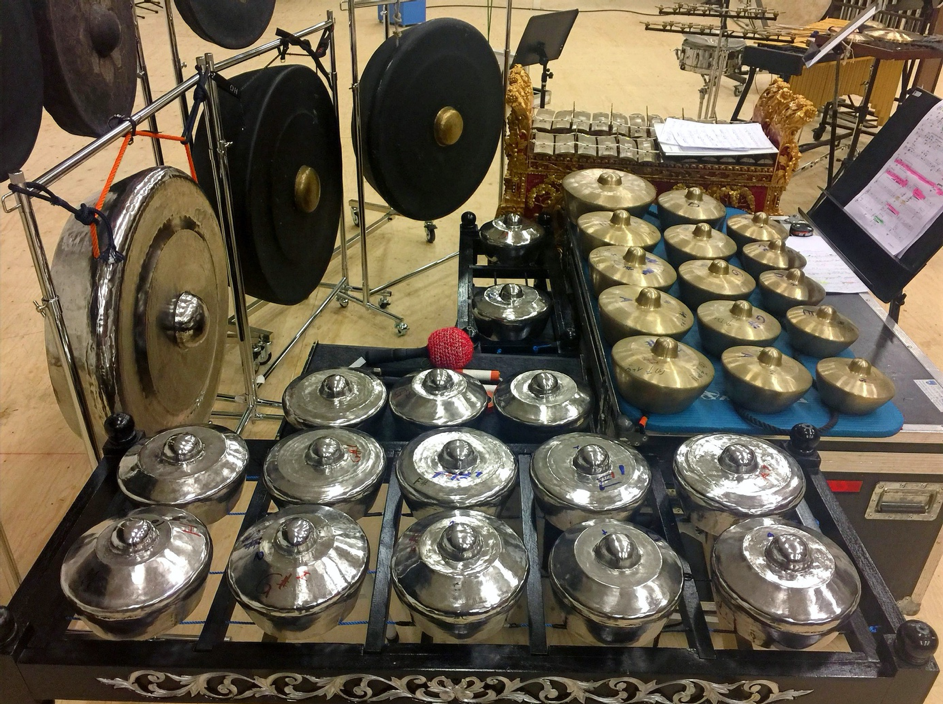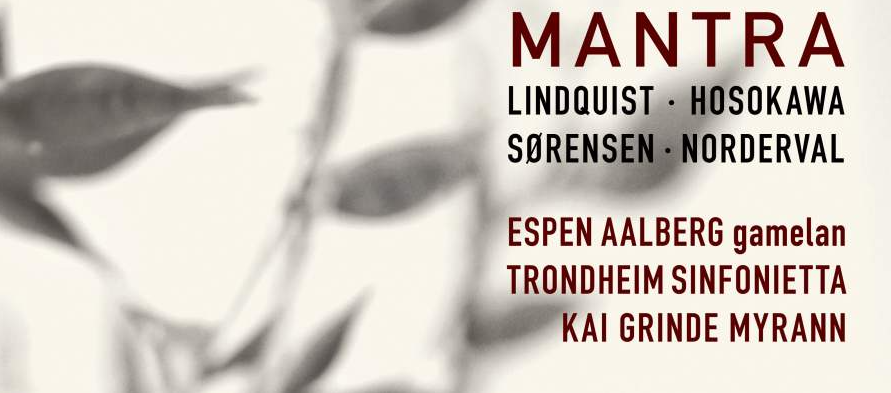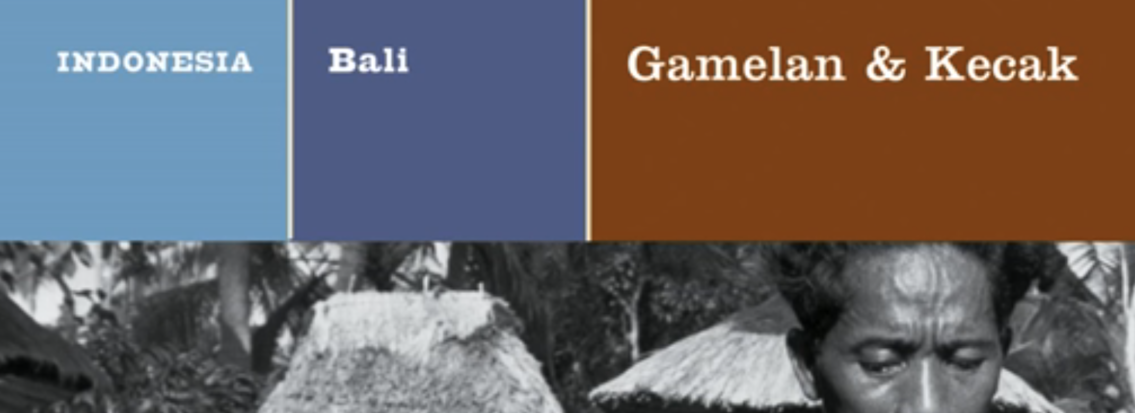This notation above represents approximate intervals. These two scales do not use the same fundamental tone, and the fundamental tones of each of the gamelan instrument sets can vary. I have instruments in the pelog system, both from Bali and Java, with fundamental tones in d and h, respectively.
This system and the tuning/sound analysis formed the basis for a sonically intonational integration of the Western instruments in the "Mantra.”
The Process
The process of developing “Mantra” from the concept to a finished product on a record can be described in five steps:
Step 1: Identification of what Ellen Lindquist and I wants to achieve and how to achieve this.
Step 2: Attempt: Solo improvisation and composer−soloist talks.
Step 3: Attempt: Ensemble improvisation based on material from Step 2.
Step 4: Processing material: Composition of “Mantra.”
Step 5: Result: Rehearsal, concert, and recording.
In this reflection, I will mainly focus on steps 2, 3, and 4 and point out the connections between the improvised material and its translation into composed material.
Step 1. Identification/Concept
What do we want with “Mantra”? This is described earlier in the text, but can be summarized with the following questions:
How can I, through various processes involving improvisation with gamelan instruments, form a musical foundation for a composition for gamelan and a Western ensemble, composed by Ellen Lindquist?
This question constitutes the starting point for the process of “Mantra.” Here, Ellen and I prepared various musical experimentation strategies that could identify musical material and lead to a common platform for a meeting between gamelan instruments and Western instruments. This was further investigated in step two.
Step 2: Solo Improvisation Material
Material development and composer−soloist talks: Ellen Lindquist is a composer who works closely with the performer. The basic compositional ideas in "Mantra" are based on different improvisation sessions. Before Ellen's composition work, me and Ellen had meetings where I explained gamelan instruments, demonstrated sounds, and tried different ideas.
Video 1: Conversations about Opportunities and Demonstrations of Instruments
Timeline
"Mantra" is a composition for gamelan and sinfonietta by Ellen Lindquist. The work was initiated by me in autumn 2015 and received commission support from the Norwegian Council on December 4, 2015. The composition premiered November 22, 2016, was recorded December 9, 2017, and released in October 2018 on Trondheim Sinfonietta's release "Mantra" (BIS Records).
The person ordering the instruments may also want a particular tuning, and in cooperation with the blacksmith, decide the tuning for their instrument set. For example, the second tone of the pelog might be tuned high or low to the first tone and may vary between a half- or whole tone step. The variation in tuning is also significant from blacksmith to blacksmith. Therefore, mixing instrument sets is not common, as each instrument set has unique tuning.
Conclusion
Given a project that rises from a concept through various stages of processes that end up in an art product published on a record, I do not doubt that Ellen Lindquist’s composition for gamelan and sinfonietta was successful. The process can be viewed in light of a research method in which each step affects the next. My initial intentions as a performer, initiator, and commissioner of "Mantra" were all met, with a particular focus on a good integration of the gamelan into the Western ensemble—and vice versa: the integration of Western instruments into the gamelan. Central to this work was a process based on improvisation and interaction with the composer, which resulted in a finished artistic product. Ellen has done an excellent job as a composer and research collaborator, and without her artistic research, “Mantra” would, of course, not have been realized.
“Mantra's” Background
Since 2002, I have worked as a percussionist at Trondheim Sinfonietta and helped to build the ensemble musically and administratively. Trondheim Sinfonietta is a contemporary music ensemble. The instrumentation changes, but most common is a symphony orchestra, with one performer on each instrument. The background for "Mantra" was my stay in Bali 2012, where I studied Balinese gamelan. These studies I have thoroughly described in the chapter 1.2. - Musical background. I received support from the Norwegian Cultural Council for the purchase of gamelan instruments, which I received in Norway in 2012.
The background for initiating the commission was a wish to collaborate with Ellen Lindquist. Through this, I wanted to explore my knowledge of gamelan, playing contemporary music, and how to unite gamelan instruments and Western classical instruments. The artistic goal, through collaboration, was to create an art product that showed the sonic possibilities of the gamelan instruments in interaction with Western instruments in the context of contemporary music. I asked Ellen Lindquist to be the composer, because she had a musical language and compositional practice that would fit the project. Ellen is also experienced in composing for percussion. She had also just moved to Norway, and I saw it as an essential task to strengthen the working foundation for composers connected to the Trondheim area. This formed the basis for applying for funding from the Norwegian Cultural Council.
Intonation and Tuning of My Gamelan Instruments
The tuning of my gamelan instruments is vital for the working process and the artistic result in “Mantra.” Since gamelan instruments have fixed tuning and cannot be adapted/re-tuned directly to other non-gamelan instruments, Western instruments must be adjusted. Most Western musical instruments have the possibility of altering the tuning. Therefore, solving the intonation issue was an important element for me as a condition of the work.
To obtain an integrated intonation in "Mantra,” the intonation and sound for each gamelan instrument were analyzed. I recorded all the instruments for further intonation analysis by Ellen Lindquist and Sigurd Saue, Department of music, NTNU. The large gongs were spectrally analyzed, that is, with an analysis of overtones. Out of these overtones, Ellen made chords she transferred to the Western instruments to interact with the gongs. In many ways, it seems like the Western instruments come out of the gong sound.
The only Western instrument with initially strict tempered tuning was the harp, as the other instruments can adjust their intonation with a mouth, air, and finger technique. The harp was, therefore, retuned to fit the gamelan instruments’ intonation.
Ellen made an overview of my gamelan instruments’ tuning:
These musical concepts retrieved from "New Techniques" and "Traditional concepts" mentioned above, appear in several places throughout the work.
The last ensemble improvisation consisted of violin, cello, trombone, and clarinet. With this ensemble, Ellen wanted to more thoroughly test the sounds from the bow overtones on the reyong, as in video 3.
Step 4: Processing Material
The material produced in steps 2 and 3 inspired that in step 4, the composing of “Mantra.” The process has now shifted from me being most active in step 2 to fellow musicians and me in improvisation, with input from the composer in step 3 to Ellen being most active in step 4. "Mantra" ended up in two editions: premiere and recording. For the premiere performance, the percussion part was played by two musicians. Percussionist Lars Sitter mainly played the various big gongs. The reason for this was the short time between the delivery of the score and the premiere performance. One musician could not play the solo part as it was written. Therefore, "Mantra" was revised before the recording, so it was possible to play the solo part with one musician. Much of my task concerning performing the solo part of “Mantra” was to construct an instrument layout so I could access all the instruments in a workable way. The gamelan instruments are not designed for one musician to play several instruments simultaneously. Therefore, I had to find alternative racks and layouts. I ended up with the following instrument setup:
As Colin McPhee noted about tunings and scales, “Deviations in what is considered the same scale are so large that one might, with reason, state that there are as many scales as there are gamelans” (McPhee, 1966, p. 36).
This quote is in line with Pieter Duimelaar’s investigation regarding the differences in the unique tuning of the Balinese gamelan. In his study, he showed the same melody played by assorted gamelan orchestras. The various examples are on this webpage. This research revealed a considerable variety of tuning. For me, this points to two essential factors:
- The basic fundamental tone in the same scale has a huge span between examples.
- The interval on the same scale has a huge variety between instrument sets.
This investigation shows a non-standardized way of developing and tuning the instruments. When working with gamelan instruments together with Western instruments, this different approach to tuning is an obstacle when trying to merge gamelan and Western instruments.
The pelog system is heptatonic, but it is divided into different five-tone scales. The reason is that gamelan music consists of several distinctive ensembles with diverse modes/scales, where these are all within the pelog system. Why pelog is collected on a seven-tone scale is somewhat unclear, but ancient gamelan ensembles like “Gamelan Semara Pegulingan” have a full pelog system. The most common mode in pelog is selisir, which, among others, is used in the Gong Kebyar style and represents the mode we in the West associate with gamelan music. This scale consists of the tones 1–2–3–5–6 within the pelog system. My teacher in Bali, Tjokorda Raka, often used pelog as the name of the Selisir, and it is my impression that this is the case in popular speech. Therefore, I will continue to use pelog when referring to the selisir mode.
The slendro scale is a more conventional pentatonic scale with roughly the same intervals as the black keys of the piano. This scale forms much of the background of Debussy’s connection to the gamelan. It is especially prominent in his work on piano, “Estampes,” where the first movement, “Pagoda,” is perhaps considered his main composition with references to Gamelan music (as discussed in part 1.2.) Also prominent is Debussy’s use of lying fifth in the bass register. This drone phenomenon hints at the big gongs in the gamelan. Debussy described gamelan music in the following way:
“… which make our tonic and dominant seem like ghosts, for use by naughty little children” (Borgeaud, 1945, p. 41).
“Their traditions are preserved only in ancient songs, sometimes involving dance, to which each individual adds his contribution century by century” (Lesure & Langham, 1977).
These quotes tell us much about how comparable Gamelan music is today and in 1889, when Debussy heard this music the first time.
from Double Concerto for Violin, Cello and Javanese Gamelan, Movement 1: Ladrang Epikuros · Gamelan Pacifica · Jennifer Caine · Sally Singer ℗ 2015 Gamelan Pacifica
My Gamelan Instruments
My Balinese and Javanese gamelans are not made by the same craftspeople. Therefore, they do not have mutual tuning. My Balinese gamelan instruments are in the pelog scale and have a D as the first note in pelog. They are made by a blacksmith in Blablatuh, Bali. The Javanese instruments can perform in both gamelans’ scales, pelog and slendro, and have H as the first note in pelog. My Javanese gamelan does not hold the same high sonical quality as my bronze Balinese and are made of steel. Bronze instruments are of significantly higher quality and therefore give a richer sound in terms of sustain and overtones. In Java, the high-quality gamelan is also made of bronze, as all instruments are in Bali. Nonetheless, since the Javanese gamelan is not directly connected to a religion, these instruments can have a lower quality by using steel. One other reason for using steel, besides reducing production costs, is that thin steel is lighter in weight and can be repaired if it cracks. Therefore, steel is more convenient to use for travel instruments. I had the opportunity to buy these Javanese instruments from the Sambasunda ensemble when they visited the Førde Festival in 2016.
The musical center for the gamelan instruments is "Gong Agung,” the Javanese name for the largest tuned gong. In the Balinese gamelan, this same gong is called "Gong Wadon.” This instrument is at the center of the gamelan instrumentation, a navigation point that fundamentally starts musical periods and ends the music. I bought three Gong Agung/Wadon, and they have the tones Contra Bb+, big C, and big D-(+/- indicates slightly higher/lower than tempered). I also have three medium-tuned gongs: two Suwuk (Java) and one Lanang (Bali), which is tuned higher at F, Ab +, and C.
Gamelan Instruments Used in Mantra
The instrument selection started with choosing which gamelan instruments Ellen wanted to use. Her choice was based on my recommendation and instrument knowledge. The instruments we chose to use were:
- Three Agung/Wadon (large size, tuned gongs)
- Three Suwuk/Lanang (medium size, tuned gongs)
- Balinese Reyong (17 laying small size, tuned gongs)
- Javanese Bonang (16 laying small size, tuned gongs)
- Two Balinese gangsas (metallophone with 12 notes over two octaves, reminiscent of Orff metallophones)
- Zither (Javanese string climbing instrument)
New Techniques
I wanted to explore opportunities to find new sounds in the gamelan instruments. This was not decisive for the composition, but if I could find any "unknown" sounds, it would have been exciting.
The Balinese Reyong (the smaller, horizontally laid tuned dome gongs of bronze) have a rich overtone range. I discovered that if I used a bow on the dome, I could bring out these overtones. Unlike, for example, the vibraphone, where the overtones are tuned in a fifth, octave, and major third, the overtones in the reyong are not tuned into any fixed system. Here, it is somewhat random, but because of the shape of the instrument, the overtone is somewhere between a fourth and sixth, depending on where on the dome you use the bow.
Traditional Concepts
The inclusion of traditional gamelan concepts was, for me, not an essential part of the project "Mantra.” I imagine that if an artistic process were to be limited by having to include, for example, traditional gamelan scales, slendro and pelog, and principles such as kotekan, this would limit the artistic freedom to such degree that it would affect the quality of the product. I introduced Ellen to different gamelan concepts and scales, but let her choose what she wanted to use. It was important to me that Ellen should have boundless artistic freedom to decide what direction she wanted to pursue.
One element that was included was a type of trill and grace note used in solo reyong/trompong practice, which I used during our improvisation sessions.
Another feature instrument was the Javanese zither, a plucked string instrument. I got this instrument when I bought my Javanese gamelan. I have no special knowledge about how to play the zither, but in general, I like the sound. Through experimentation, I discovered some, for me, unique sounds.
Step 3: Ensemble Improvisation
The demonstrations, improvisations, and conversations from step 2 formed the framework for Step 3: ensemble improvisation. In this step, the focus was sonic awareness and intonation between gamelan and Western instruments. Ellen controlled this to a greater extent; she wanted to explore specific moods based on the material from Step 2, but constantly in the improvisational context. The first example is an interaction and conversation with trombonist Ole Jørgen Melhus.
Video 5: Ensemble Improvisation Focusing on Reyong Overtones.
Rik De Geyter - Clartinet, Marianne Baudouin Lie - Cello, Sigrid Stang - Violin
Introduction
"Mantra" Composed by Ellen Lindquist
"Over a long sonic landscape and at an almost-exclusively slow tempo, Mantra subtly revels in ever-changing intonation, conjuring almost a fourth dimension that seems to stretch back in time.
Lindquist's score looks deceptively standard—save for a predilection for low wind instruments (cor anglais, bass clarinet, and double bassoon joining the flute), with horn, trumpet, trombone, harp, and strings, in addition to the gamelan player. Despite the visual cornucopia of actual instruments, the gamelan is notated often on a single stave, occasionally two, with a written indication as to which instrument—Ganga, Bali Reyong, Java Reyong, Siter, Gong Ageng, etc.—while the ensemble’s instrumental parts are suffused with pitch instructions to match the gamelan.
As indicated by the devotional title, this is a 25-minute reverential hymn full of subtle teeming detail and delicate instrumental partnerships, set off by the harp and gamelan, out of which develops an important recurring quaver motif, beginning and ending with a dotted quaver, as if the repeated mantra of the title. The meditation is glacially slow, but more important is the opening instruction: ‘Still, expectant,’ as if the message is that we need to give ourselves the occasional elongated time span to think calmly. The interaction between Eastern and Western instruments, both unusual and also timeless, encourages us to do just that: to breathe deeply and lose ourselves in an other-worldly soundscape to assuage the travails of the modern world."
This is how "Mantra" was referred to by Nick Breckenfield in the album cover for the BIS release in 2018. BIS is a highly respected classical recording labels. Breckenfield's liner note emphasizes my intentions as a soloist and initiator of the commission "Mantra” and refers to several of the processes behind the making of the piece. It testifies to a carefully thought-out mix of gamelan and Western instruments. The music is put into a Western ensemble's environment, concerning interaction and notation, all the time with a spiritual and calm touch, notably through large gongs as a compositional navigation point.
In the "Mantra" reflection, I will explain the background, the content of the work, and the processes that underlie the artistic product. Ellen Lindquist’s contribution is undoubtedly an independent artistic research project, where the processes behind the composition are the analysis of instrumental sound and the transcription of my fellow musicians and my improvisation work, experiments, and tests. This pre-compositional work forms the foundation for Ellen’s composition. In this reflection, I will emphasize my contribution, my initiatives, and the collaboration between Ellen and me.
However, I do not want to focus too much on the interaction with the ensemble, as this materializes as in any other contemporary music ensemble performance, with soloists, conductors, and ensembles with ordinary roles. Ellen's score is notated in detail, and everyone involved must follow this as thoroughly as possible
Gamelan Tuning and Scales
Indonesian gamelan instruments are handmade. I purchased my Balinese instruments in 2012, made by the gamelan craftsmen in the Balinese village of Blahbatuh in the Gianyar region. According to my Balinese gamelan teacher, Tjokorda Raka, they are Bali's finest instrument makers. Gamelan instruments are tuned by ear by the instrument maker in cooperation with the buyer. This tuning is not as exact as in the Western temperate system, but it is based on the scales pelog and slendro.
The Working Process
The actual process with "Mantra" started after the grant of support from the Norwegian Cultural Council. Ellen had no limitations regarding instrumentation, both concerning the gamelan instruments I had and Western instruments in the ensemble. After she had decided the instrumentation, we began a conversation about furthering the process.
Ellen Lindquist's method is often to work closely with the performer, where the performer contributes in several ways to a musical starting point. I had several wishes for how to use gamelan.
- I wanted to integrate the intonation and tuning of the gamelan with the ensemble (i.e., adapt) the Western instruments to the gamelan's tuning.
- I wanted to find new techniques on gamelan instruments and, hence, bring out new sounds.
- I would include musical elements based on traditional phrasing from gamelan music, elements, motifs, and the use of original mallets for gamelan.
- I had imagined an improvisational process involving gamelan and Western instruments.
Performed by Gamelan Sakukat, Bali. Recorded in October 2016 at Salukat Studio, Bali. More info her.
I have mixed feelings related to intonation in some of the music that holds both gamelan and Western instruments. Often, I feel everything sounds wrong; the gamelan and Western instruments are perceived as out of tune. In this way, everything comes out slightly wrong, and in my opinion, the sonic quality of musical instruments is inferior. The way I hear it, the music example "Michael Tenzer-Buk Katah Part 1" illustrates this. This ensemble has a more or less similar hierarchy between Western and gamelan instruments, which may be why it bursts with sound.
Gender Wayang, Sukawati (Sulendro) · from Various Artists / Explorer Series BALI: GAMELAN & KECAK ℗ 1989 Nonesuch Records
Released Recording: “Mantra”
from Mantra ℗ 2018 BIS-2340 SACD
“Mantra” by Ellen Lindquist. Performed by Espen Aalberg and Trondheim Sinfonietta
Other composers, like Lou Harrison, have, to my ears, made more successful mixed gamelan and Western instruments. In his composition "Double Concerto for Violin, Cello and Javanese Gamelan", (to the left) the violin and cello are adjusted and integrated into the gamelan tuning, and to my ears, this sounds like a completely traditional Javanese gamelan composition. The intonation’s center is the gamelan instrument.
The contemporary gamelan composer Dewa Alit has designed and created his personal tuning, which is used in his gamelan ensemble “Gamelan Salukat.” On his web page, Dewa says the following regarding "Salukat":
"Gamelan Salukat is a set of new gamelan instruments developed by Dewa Alit, reflecting Dewa's strong root in traditional music as well as his hope to accommodate challenges he faces in creating new music in Bali."
Gender improvisation (Toccata pelog) · from Nyi Cendaniraras, Nyi Umi Hartono, Djoko Raharjo, Sri Hartono Gamelan of Central Java : Flower The Meditative Gender Colours ℗ Arion
This video is a conversation between Ellen and me where the focus is instrument sounds and playing techniques.
In this video, I improvise around the oscillations that occur between the different tunings of the gamelan instruments. I used the bow technique on Reyong.
The new sounds that emerged were widely used with violins in a high register/flageolets.
This video session is central to the development of "Mantra,” with many elements that recur in the composition. These are elements like:
- Bow overtones from the reyong that recur in harmonics in the strings
- The thematic structure of the reyong
- The use of gongs in harmony with strings.
Multiple locations in the composition showcase where elements from this video are used. This refers to a musician/composer cooperation that provides a musical and sonical result where the act of improvisation is an important tool.
In this video, I demonstrate the relationship between the root tone of the reyong and the overtones I get by using the bow of the instrument’s dome.

